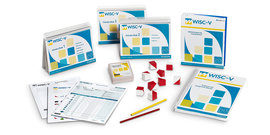Wechsler Individual Achievement Test, Third Edition: Australian and New Zealand Standardised
WIAT-III A&NZ- Updated achievement test for use in a variety of clinical, educational, and research settings
WIAT-III A&NZ Examiner's Manual (print)
9781488694721 Qualification Level BOrdering
Overview
- Publication date:
- 2016
- Completion time:
- Varies by school year level and subtests administered
- Administration:
- Individual; Q-interactive® administration and scoring, Q-global® scoring and reporting, or manual scoring
- Age range:
- Individuals 4:0-50:11
- Qualification level:
- B
Interested in training for this assessment?Please reach out via link below |
Product Details
|
The WIAT-III A&NZ is suitable for use in a variety of clinical, educational, and research settings, including schools, clinics and private practices. Use WIAT-III A&NZ results to:
Features & BenefitsWith a total of 16 subtests, WIAT-III A&NZ offers:
Improved usability options
Content & Administration
Psychometric InformationThe WIAT-III A&NZ was standardised on 1360 Australian and New Zealand students and features comprehensive normative information. The WIAT-III A&NZ was correlated with the following achievement and ability measures (these studies are included in the WIAT-IIII A&NZ Examiner's Manual):
The WIAT-III (U.S. standardisation) was correlated with the following ability measures (these studies are included in the U.S. Technical Manuals):
ErrataWe would like to bring to your attention a correction made to the WIAT-III A&NZ Examiner's Manual. The correction pertains to page 110 of the Examiner's Manual, Table 5.13 Mean Performance of the Australian and New Zealand Intellectual Disability Group and the Matched Control Group. This correction does not affect norms, reliability, or validity. The change relates to the Matched Control data which has been updated in the table below. No change has been made to the Intellectual Disability group data, or the commentary on page 111. This correction will be made on the next printing of the Examiner’s Manual. We apologise for any inconvenience this may cause you. If you have any questions, please contact our Client Services team on 1800 882 385 (toll free) (AUS) or 0800 942 722 (toll free) (NZ), or email us at info@pearsonclinical.com.au. |
|
Resources
Q-interactive
WIAT-III A&NZ Q-interactiveThe WIAT-III A&NZ assists you in identifying the academic strengths and weaknesses of a student; informing decisions regarding eligibility for educational services, educational placement, or diagnosis of a specific learning disability; and designing instructional objectives and planning interventions. Basic Reading Word Reading Pseudoword Decoding Maths Problem Solving Numerical Operations Maths Fluency Listening Comprehension Oral Expression Reading Comprehension & Fluency Reading Comprehension Oral Reading Fluency Early Reading Skills Alphabet Writing Fluency Spelling Essay Composition Subtest Sentence Composition Subtest |





